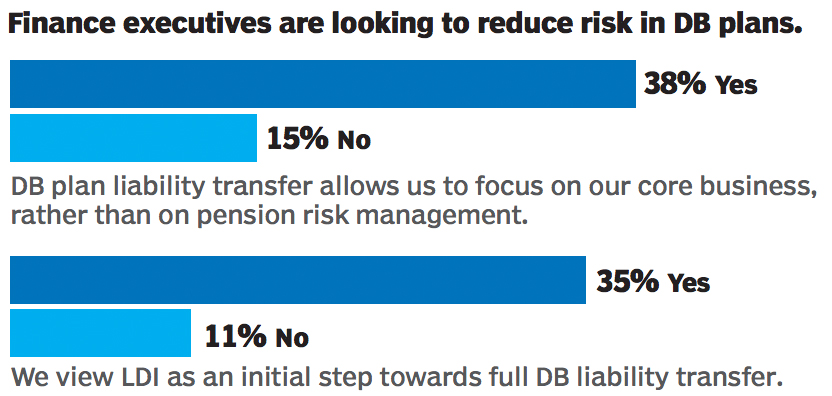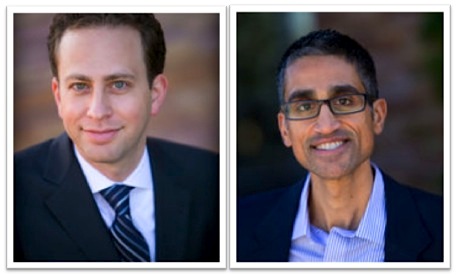The relevant question for plan sponsors isn’t whether to transfer liabilities, but rather when to do it, according to Russell Investments’ research chief.
All frozen defined benefit (DB) plans will be terminated eventually, Bob Collie pointed out. At some point, handing off lingering payout responsibilities to an insurer or some other third party just makes business sense.
“If you’re frozen, at some point you will be doing a risk transfer,” he said in an interview with CIO.
Collie said interest in annuity buyouts has “really ramped up” over the last five years, with six deals in excess of $1 billion occurring in the US since 2012. Upwards of $260 billion in pension liabilities have transferred since 2007, according to Prudential, including $67 billion in US PRT deals.
 Source: Prudential’s “Closing the Gap in DB Plans”When asked, 38% of corporate plan sponsors told Prudential they see PRT as a way to focus on the company’s core business, rather than pension risk management. An
additional 35% said they viewed liability-driven investing as a path toward a
full liability transfer.
Source: Prudential’s “Closing the Gap in DB Plans”When asked, 38% of corporate plan sponsors told Prudential they see PRT as a way to focus on the company’s core business, rather than pension risk management. An
additional 35% said they viewed liability-driven investing as a path toward a
full liability transfer.
But just because a risk transfer is the next logical step for frozen plans, Collie cautioned, doesn’t mean it ought be the next immediate step.
“When the possibility of risk transfer is being discussed, it’s often, ‘Are we going to do this or not?’” Collie said. “The assumption being that we’re going to do this right now.”
Collie said pension plans can usually benefit from a hibernation phase—that is, continuing to manage assets and pay out liabilities after the plan has been frozen. Hibernation, he explained, allows time for the plan’s liabilities to “run down” as active employees leave the company or retire and participants and their beneficiaries die. The plan as a whole becomes less risky and the costs of offloading liabilities less expensive.
“The longer you wait, the more those liabilities get closer to being paid, and the better place that liability profile is in.” he said.
In addition to the plan’s liability profile, other factors sponsors should take into consideration when deciding when to conduct a risk transfer include how big the plan is, how much it costs to operate, and whether it is potentially destabilizing for the company, Collie said.
“There are both risk and cost elements of it,” he concluded. “It’s important to make sure you’re looking at it from every angle.”
Related: Pension Risk Transfers Climb to $260B & NISA: Partial Buyouts are ‘Expensive, Underwhelming’

 Michael Buchman & Yatin Patel, Investment Directors, Conrad N. Hilton Foundation
Michael Buchman & Yatin Patel, Investment Directors, Conrad N. Hilton Foundation